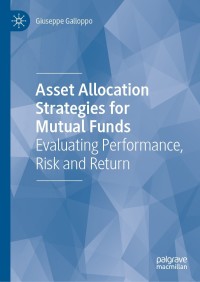Question
CASE STUDY: WHICH DESK SHOULD LOOK AFTER THIS ISSUE? The CFO of a European technology company was in a quandary. The books in the control
CASE STUDY: WHICH DESK SHOULD LOOK AFTER THIS ISSUE?
The CFO of a European technology company was in a quandary. The books in
the control system and the Treasury system were showing different numbers.
The Treasurer, who had claimed a massive savings as a result of his hedges, had
resigned when the controller reported that the hedging process over the past two
years had actually lost the firm a lot of money and that the objectives of achieving
stability and visibility of financials were not being met. The week after the Treasurer
had quit, one of the dealers came to the CFO with a problem: A hedge transaction
that the Treasurer had done earlier in the month as part of the hedging program
that had also been reported in the GL system (ERP) had come up for maturity, but
the bank had no records of the supposed transaction. Similarly, a payment that was
supposed to have gone for an earlier hedge settlement through the electronic system
had shown a confirmation, while the bank was still asking for the payment to be
made.
The Treasury team was responsible for the transactions and interface with banks
and for accounts and liquidity management. Any entries to be passed were done
so by the controller s team based on reports issued by Treasury. The control team
members were not experts on Treasury decisions and products; they left decisions
to the expertise of the Treasury team, agreeing in the spirit of teamwork to help
pass the entries in the back end. Implementation of a state-of-the-art Treasury system
had assisted the process. Entries were now mostly automated except for a few
processes, where the front end or dealers still handed over reports and the transaction
entries in the ERP were then be passed by control based on these inputs.
The CFO immediately requested an independent review, and after two weeks,
he received the report. Sifting through the points, there was one thread that was
common: the differences between the various elements, systems, or desks on their
evaluations, numbers, and balances. The reconciliation process had gone awry. The
ERP (GL system) and the state-of-the-art Treasury system that the company had
invested in on the Treasurers recommendation were showing completely different
numbers on account balances and hedging transactions. Transactions reported on
the Treasury system and whose mark-to-markets were being correctly reflected
in the accounting books were not present in the banks reports. Limit excesses by
traders had been checked (the checklists had been ticked) but not reported, since
the checks had been done by the traders themselvessystem and banking reports
would come in to the dealers who would perform the verification to the best of
their ability.
The CFO called the controller and the senior members of the Treasury team. All
of them had done their day-to-day operational jobs to the best of their abilities,
but when the time came to discuss reconciliation, the answers were ambiguous.
Owing to direct system handoffs between the Treasury system and the ERP, no
one had felt that there was a need for reconciliation. The banks offer to integrate
their systems with the Treasury system had been rejected owing to incremental
implementation costs. Hence the activity had remained with the Treasurer and his
team. Limit checks were designated a noncritical activity by the dealers and hence
were not factored into reviews on automated system reportswhere they had
been built, the recipient e-mail addresses listed the dealers themselves, and postmigration,
the addresses had not been changed. The inbox of the Treasury team
members was thus flooded with over 100 reports that kept being flushed to the
Unread reports folder and purged whenever the mailbox exceeded its limit.
The solution again was simple: The reconciliation process had to be done, regularly.
The question was, by whom?
Would it be done by the front office, giving it access to the back-end systems
as well? Or was it a back-end task, reconciling tasks after the entries had been
passed? Or was it worthwhile to invest in a middle office, which would be responsible
for all the reporting and the reconciliation, independent of the activities of
deal origination, decision making, and booking in the firms ledgers?
What is the issue discussed in the case?
Who is the main responsible unit for this problem and why?
What do you suggest to avoid such problems in the future?
Step by Step Solution
There are 3 Steps involved in it
Step: 1

Get Instant Access to Expert-Tailored Solutions
See step-by-step solutions with expert insights and AI powered tools for academic success
Step: 2

Step: 3

Ace Your Homework with AI
Get the answers you need in no time with our AI-driven, step-by-step assistance
Get Started


